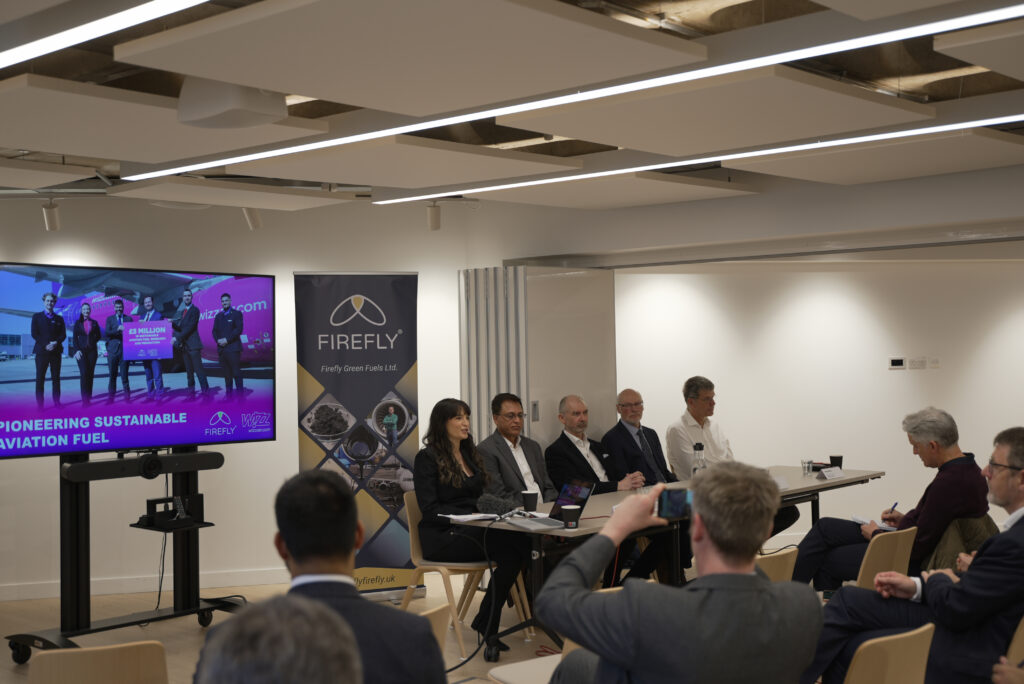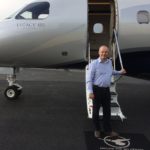 UK startup Firefly has announced its intention to commercialize a unique pathway to sustainable aviation fuel (SAF) production, tackling the perennial challenges of cost, feedstock availability, and scale. Notably, low-cost carrier Wizz Air has inked investor, shareholder, and offtake agreements with Firefly.
UK startup Firefly has announced its intention to commercialize a unique pathway to sustainable aviation fuel (SAF) production, tackling the perennial challenges of cost, feedstock availability, and scale. Notably, low-cost carrier Wizz Air has inked investor, shareholder, and offtake agreements with Firefly.
Taking processed human sewage as feedstock, Firefly applies moderate levels of heat and high pressure in a proprietary process known as hydrothermal liquefaction, producing biocrude and biochar. The former is then refined in a process similar to that for fossil crude, while biochar has possibilities for use as an aggregate or fertilizer.
Wherever there are humans there is sewage, taking care of the feedstock problem. Firefly’s route to SAF ‘attaches’ a hydrothermal liquefaction plant to a refinery, only minimally modified for biocrude rather than fossil crude. Existing refinery sites should readily modified easing the problem of scale.
During an 11 April press briefing in London, Firefly COO Paul Hilditch declined to reveal numbers but confirmed company modelling suggests hydrothermal liquefaction should be among the least expensive SAF production methods.
James Hygate, Firefly CEO, added: “Our aim from the start was to do this everywhere in the world because this feedstock is everywhere. We believe that with the incentives in place there is the potential to reach price parity with fossil jet fuel within the next decade.”
The initial commercialization effort relies on recently signed MoU agreements with Haltermann Carless, Petrofac, Chevron Lummus Global (CLG), and Anglian Water.
Among the UK’s several water providers, Anglian Water will deliver the processed sewage to a Haltermann Carless refinery site in Harwich, UK. Processed sewage is mostly used as an agricultural fertilizer in the UK, a practice likely to be outlawed in time, following similar bans in countries including Germany, where the waste is incinerated.
With a 40-year history of designing, building, and operating energy facilities, Petrofac is preferred contractor for the infrastructure required for the Harwich demonstrator plant. Hygate said the work will effectively become the first stage in a full-scale commercial facility. Looking ahead, CLG will bring its extensive processing experience as the project scales up.
Having entered into an offtake agreement with Firefly in 2023, ultra-low cost carrier Wizz Air was represented at the event by Corporate and ESG Officer Yvonne Moynihan. Speaking to Runway Girl Network, Moynihan explained the agreement is valued at almost $1 billion across 15 years.
“We have investor’s and shareholder’s agreements, then a separate commercial offtake agreement. The offtake is very significant, at 525,000 tonnes over the 15 years. We have an equity stake from this first round of funding, and we’ll consider further rounds as they arise,” she said.
Wizz Air has declared an ambition to reduce its carbon intensity, a measure of carbon emissions per passenger kilometer, by 25% by 2030.

Yvonne Moynihan, Corporate and ESG Officer, Wizz Air at Firefly’s 11 April press conference. Image: Firefly
The carrier’s timeline for achieving such a significant emissions reduction represents a lofty target, especially since Firefly is unlikely to produce meaningful fuel quantities in that timescale.
Moynihan acknowledged the fact, admitting: “The vast majority of that reduction will be through fleet renewal, but that’s been complicated by issues with the GTF engine, forcing us to ground some of our A321neo aircraft. As mitigation we’ve extended leases on some older ceo aircraft, and we’ll need to make up any shortfall later with SAF.”
No single route to SAF will satisfy global need. As part of the Indigo Partners group alongside Frontier Airlines, JetSmart and Volaris, Wizz Air also has investments in US company CleanJoule, which aims to employ biomass feedstock.
Hygate, meanwhile, is as convinced of Firefly’s SAF potential as he is pragmatic about the challenges still ahead.
He said the infrastructure required at Harwich is likely to cost ‘hundreds of millions of dollars’, with more funds needed. Assuming the money materializes, the plant should begin producing SAF in reasonable quantities in 2028-29, with commercial production, essentially for Wizz Air, from 2030.
Related Articles:
- EasyJet commits to buying carbon removal credits
- EASA to help airlines choose greener flights under new remit
- KLM doubles sustainable fuel charge to cover cost of more SAF
- Sun-to-liquid jet fuel heats up as Swiss aims to be first user
- Aviation among sectors to be served by Texas hydrogen production plant
- Initial research findings suggest positive impact of SAF on contrails
- Carrot vs stick: Which policy will help SAF market fly higher?
- Activity ramps up to advance e-fuels and hydrogen in aviation
Featured image credited to Fintan Horan-Stear












